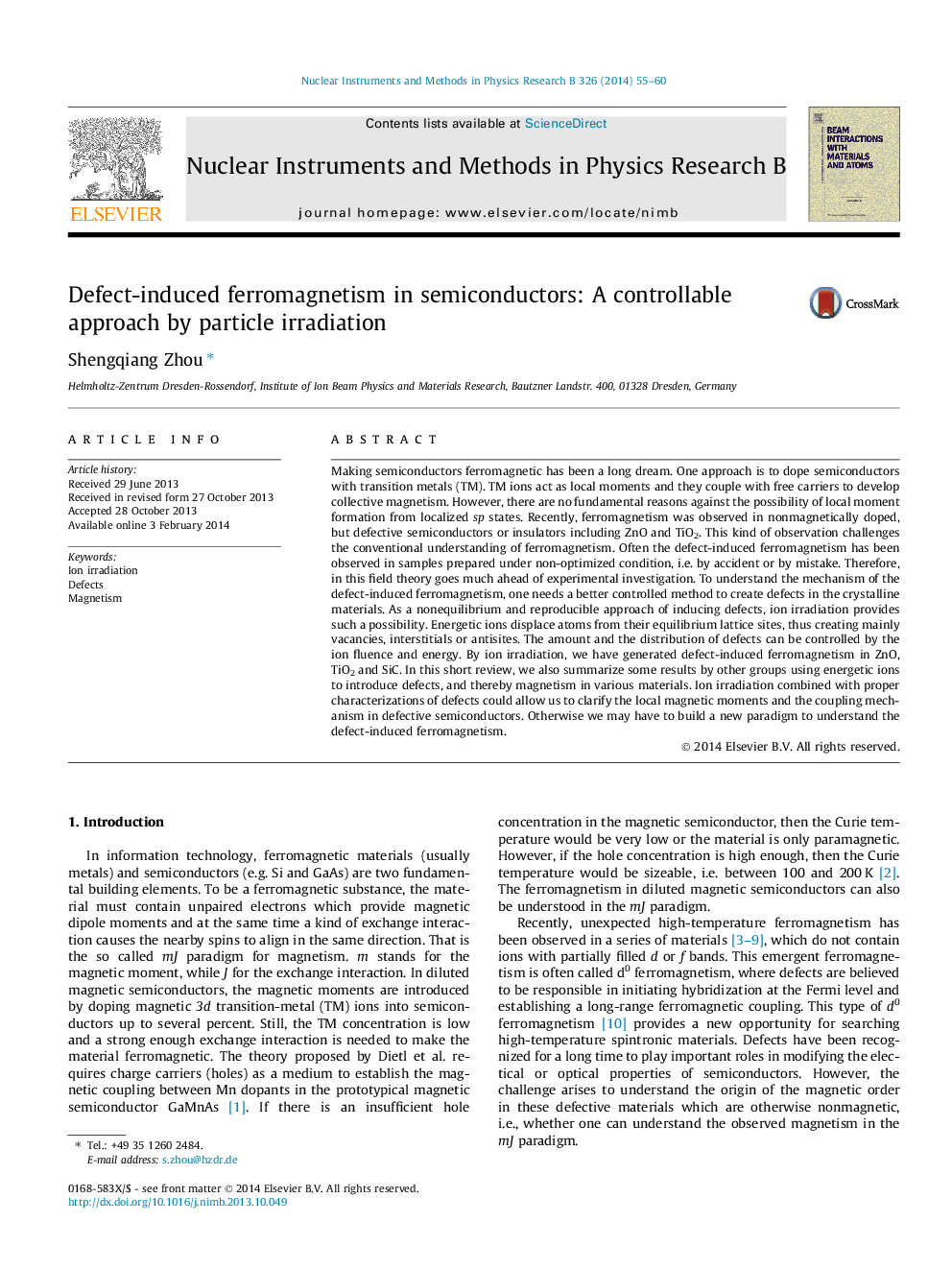| کد مقاله | کد نشریه | سال انتشار | مقاله انگلیسی | نسخه تمام متن |
|---|---|---|---|---|
| 1681017 | 1518693 | 2014 | 6 صفحه PDF | دانلود رایگان |
Making semiconductors ferromagnetic has been a long dream. One approach is to dope semiconductors with transition metals (TM). TM ions act as local moments and they couple with free carriers to develop collective magnetism. However, there are no fundamental reasons against the possibility of local moment formation from localized sp states. Recently, ferromagnetism was observed in nonmagnetically doped, but defective semiconductors or insulators including ZnO and TiO2. This kind of observation challenges the conventional understanding of ferromagnetism. Often the defect-induced ferromagnetism has been observed in samples prepared under non-optimized condition, i.e. by accident or by mistake. Therefore, in this field theory goes much ahead of experimental investigation. To understand the mechanism of the defect-induced ferromagnetism, one needs a better controlled method to create defects in the crystalline materials. As a nonequilibrium and reproducible approach of inducing defects, ion irradiation provides such a possibility. Energetic ions displace atoms from their equilibrium lattice sites, thus creating mainly vacancies, interstitials or antisites. The amount and the distribution of defects can be controlled by the ion fluence and energy. By ion irradiation, we have generated defect-induced ferromagnetism in ZnO, TiO2 and SiC. In this short review, we also summarize some results by other groups using energetic ions to introduce defects, and thereby magnetism in various materials. Ion irradiation combined with proper characterizations of defects could allow us to clarify the local magnetic moments and the coupling mechanism in defective semiconductors. Otherwise we may have to build a new paradigm to understand the defect-induced ferromagnetism.
Journal: Nuclear Instruments and Methods in Physics Research Section B: Beam Interactions with Materials and Atoms - Volume 326, 1 May 2014, Pages 55–60
